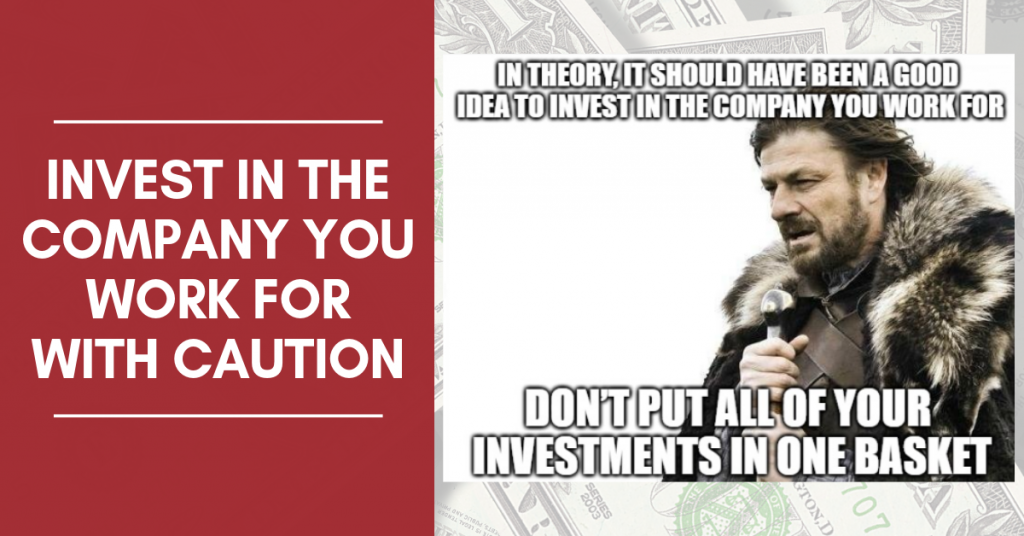Always View Yesterday’s Successes Through Today’s Glasses
This post was originally published here.
When I was younger and not so financially “sophisticated”, I used to work for one of the largest international general contractors in the world.
In theory, it should have been a good idea to invest in the company I worked for
As part of my 401(k) plan, I was given the choice of different funds in which to invest my retirement contributions, along with the choice of investing some of my retirement in shares of the company at which I worked.
Note: In the United States, a 401(k) plan is the tax-qualified, defined-contribution pension account. Under the plan, retirement savings contributions are provided, and sometimes matched, by an employer, and deducted from the employee’s paycheck before taxation.
Giant company operated across generations ends up in bankruptcy court
Tragically, even though my company had been around for generations, it eventually went bankrupt and my shares in the company became almost worthless. And by almost worthless, I mean, I eventually received a check stemming from the court proceedings about six years later for about US$2.75.
Don’t put all of your investments in one basket
Investing your retirement money into the same company where you work is a terrible idea so a dividend reinvestment program offered by your own company may sound nice on paper, but you are only making others rich and are not properly diversifying your personal risk.
Andrew’s takeaways – Avoid these mistakes to become a better investor
Invest in the company you work for with caution
Many companies offer employees stock-ownership opportunities. If you can buy the company’s shares at a discount to the market price or if the company matches your investment, it could be very valuable. If that’s the case, it could be in your best interest to put as much money as possible into it. Just don’t stay invested in that stock forever.
Try to avoid concentration risk
Many stock-ownership plans require you to own the shares over a long period. In such cases, you are locked in. So, if you put your maximum amount into the program and you’re locked in for a long time, you will be very exposed to this one company. Of course, we all like to think we know that this company will survive and thrive, but in reality, nobody knows. Your best solution is to maximize the contribution that makes you the most money but to try to exit portions of that position as soon as you reach the time that you are allowed to sell. In this way you capture part of the benefit that the company is giving you, but you don’t get yourself overexposed to that one stock.
Mistakes in this story
1. Failed to do their own research
- Relied on the assumptions of others
2. Failed to properly assess and manage risk
- Assumed past performance would continue
- Failed to diversify
- Invested in the company they worked for
5. Failed to monitor their investment
- Failed to review investment strategy regularly
Learn about the six ways you will lose your money and how to avoid them here.
DISCLAIMER: This content is for information purposes only. It is not intended to be investment advice. Readers should not consider statements made by the author(s) as formal recommendations and should consult their financial advisor before making any investment decisions. While the information provided is believed to be accurate, it may include errors or inaccuracies. The author(s) cannot be held liable for any actions taken as a result of reading this article.


